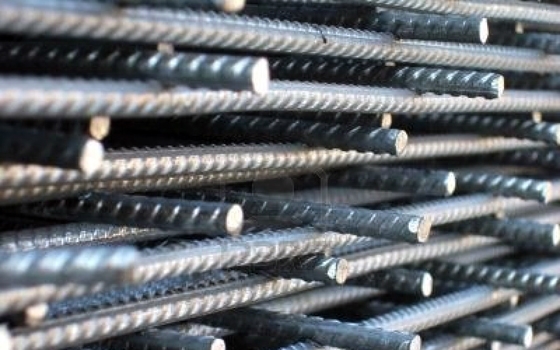Huge infrastructure spending in the Middle East is driving a strong demand for steel and fuelling investment in steel projects, revealed Frost & Sullivan’s yearly sectoral analysis of the steel industry in the Middle East and North Africa (Mena) region.
According to Frost & Sullivan, the steel industry is one of the potential growth sectors in the Mena region.
Crude steel production in the Mena region has increased from 20 million Metric Tonnes (MT) in 2006 to the range of 27 million MT by 2011-12 at a Compound Annual Growth Rate (CAGR) of approximately 4.4 per cent.
The two major steel production hubs in the Mena region have historically been Iran and Egypt. But there has been a shift in the industry with the Gulf Cooperation Council (GCC) countries emerging as leading steel producers.
“Crude steel production in the GCC is mainly from the Kingdom of Saudi Arabia (KSA) and the UAE with both these countries representing around 75 per cent of the total crude steel production in the GCC during 2013,” said Venkatesan Subramanian, vice president and global leader, metals and minerals practice, Frost & Sullivan.
“The major raw material source for crude steel production in the region is gas-based Direct Reduced Iron (DRI) due to the availability of competitive natural gas in the region. Electric power is available in the region at a relatively cheaper tariff when compared to global average. Hence, it is ideal for the steel industry in the region to select the Electric Arc Furnace (EAF) route steelmaking technology, which is also less capital intensive as compared to the conventional steelmaking technology based on Blast Furnace-Basic Oxygen Furnace (BF-BOF) route,” he explained.
“EmiratesSteel, accounts majorly for crude steel production in the UAE. It had commenced hot metal operations in February 2009 making it the first plant in the UAE to use the DRI route of steel production. Apparent finished steel use in UAE is estimated to be around 12 million MT during the year 2013. The finished steel use is estimated to grow at a CAGR of five per cent during the next five years,” Subramanian noted.
He further noted that the key growth drivers of steel consumption in the UAE were a strong and steady economic growth forecast; the UAE government initiatives and Abu Dhabi 2030 Economic Vision’s focus on non-oil diversification of the thriving GCC economy; rising rebar and other construction steel demand growth on the back of renewed UAE construction boom; rising opportunities for local rebar production is driving backward integration vis-à-vis self-manufacturing of steel billets; and cheap energy availability for steel production.
Crude steel production in 2013 (January to July) has been 18 million MT for the Mena region, with 73 per cent of production in the Middle East. According to Frost & Sullivan, DRI production in Mena accounts for about 45 per cent of the global production. Steel demand is driven by robust construction, infrastructure developments, petrochemicals and tourism in Mena, particularly in the GCC. The region is the net importer of iron and steel products, particularly, the GCC countries, driven by their construction and infrastructure development sectors. Steel demand in the region was strong with an average annual growth of six per cent in 2013. The GCC imports over 30 million MT of iron ores and concentrates per annum.
More than $3 trillion worth of end user projects has been recorded in the Mena region up to 2016. In the GCC, governments are promoting industrialization programs in their respective countries aimed at becoming self-reliant to the extent where it is possible to reduce imports dependence, to generate other sources of income (away from a crude oil and gas economy) and to generate employment and entrepreneurial opportunities for locals (the younger generation accounts for the majority in local populations).
Continuing high oil prices and expanding populations bode well for economic growth. The IMF predicts that the Gross Domestic Product (GDP) growth rates in the GCC will continue to hover around six per cent per annum, and 2-4 per cent in the wider Mena region. The steel sector is strongly correlated to GDP and, hence, would continue to grow.
Mega Trends in the GCC are being witnessed in various sectors, the major ones being the automotive, railway, economic and industrial cities, petrochemicals and real estate, which would drive the steel industry’s growth, as various projects that are announced and underway in these sectors are expected to be completed by 2020.
Khaleej Times
3 November






















































